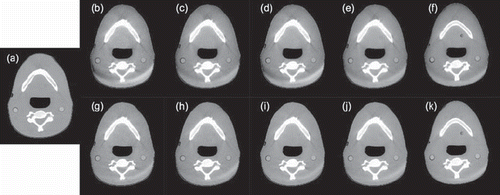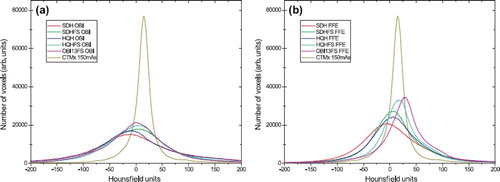Figures & data
Table I. Detailed CBCT image acquisition parameters.
Figure 1. Representative slices of Catphan 504 phantom used to assess (a) HU uniformity, (b) HU verification and linearity, contrast, and (c) high contrast spatial resolution.
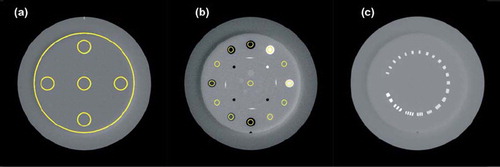
Figure 2. Plot of the nominal HU values of the seven Catphan inserts as a function of translated raw image values after FFE reconstruction for the five CBCT modes. Before the plotting, the raw image values were translated by adding a constant of 890 and 900 for 100 kV and 125 kV modes, respectively. Solid lines stem from linear regression fits shown in the figure legends.
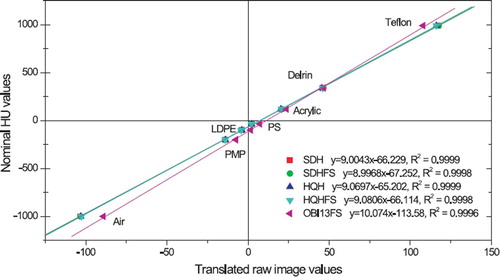
Figure 3. Mean HU value and standard deviation from the distribution of values within the central slice of the uniform disk in Catphan for five CBCT modes and two CT scanners. CBCT scans underwent two different reconstructions and CT scans were performed with two different exposures.
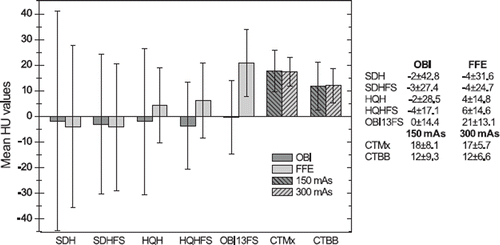
Figure 4. (a) Integral nonuniformity (IN) and (b) uniformity index (UI) of five CBCT modes and two CT scanners. CBCT scans underwent two different reconstructions and CT scans were performed with two different exposures. Error bars correspond to +/− one standard deviation for mean values over five axial slices.
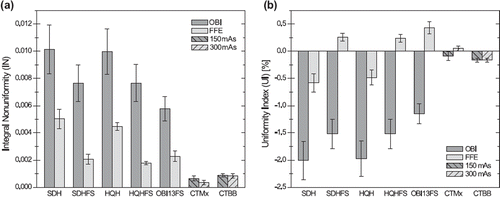
Figure 5. Difference between measured and nominal HU values in the seven inserts in Catphan 504 for five CBCT modes reconstructed with OBI and FFE. Error bars correspond to +/− one standard deviation for mean values over five axial slices.

Figure 6. Contrast-to-noise ratio (CNR) of the seven Catphan 504 inserts for five CBCT modes reconstructed with OBI and FFE, and two CT scanners with two different exposures. Error bars correspond to +/− one standard deviation for mean values over five axial slices.
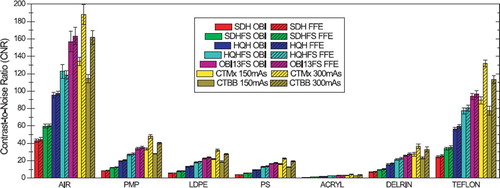
Figure 7. Low contrast visibility from Equation 4 for five CBCT modes reconstructed with OBI and FFE, and two CT scanners with two different exposures. Error bars correspond to +/- one standard deviation for mean values over five axial slices.
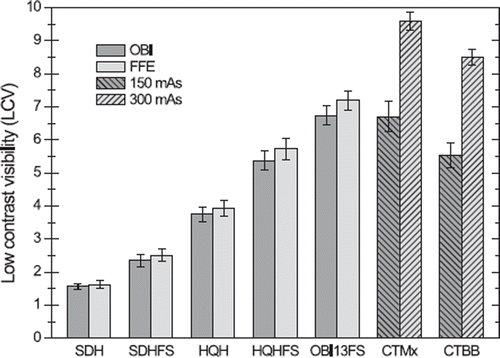
Table II. MTF for five CBCT modes reconstructed with OBI and FFE, and two CT scanners with two different exposures. MTF values at 50% (f50) and 10% (f10) are shown in line pairs/cm.




